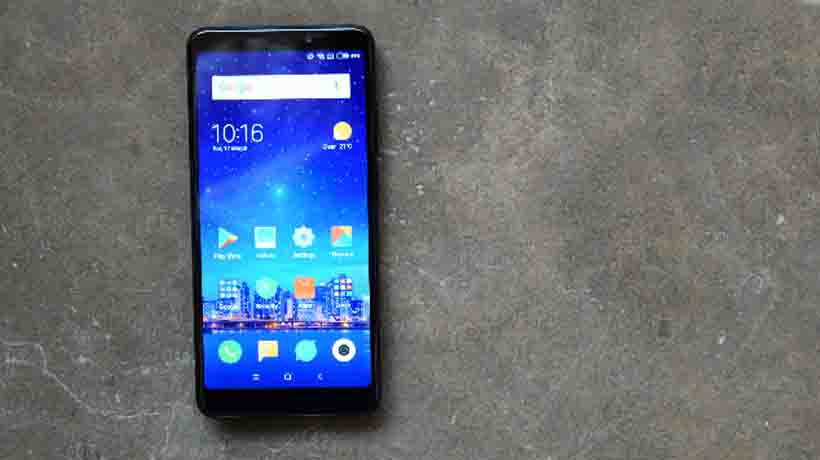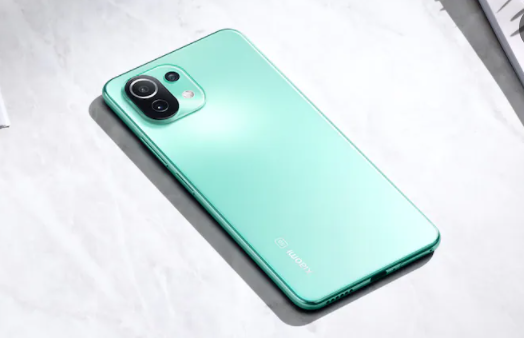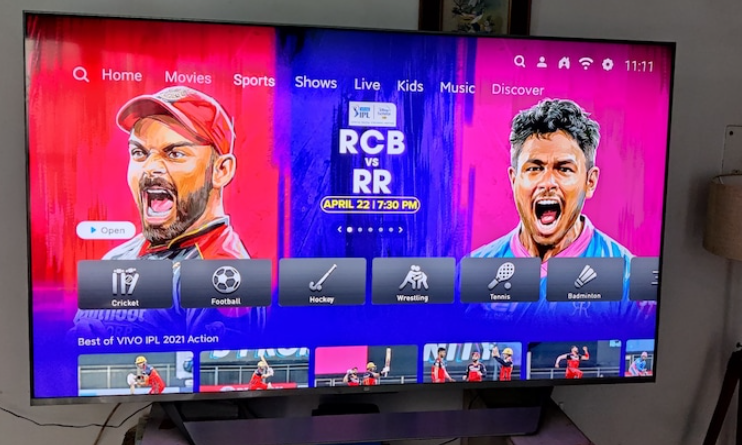Trending Now
- 830 voters names go missing in Kavundampalayam constituency
- If BJP comes to power we shall consider bringing back electoral bonds: Nirmala Sitaraman
- Monitoring at check posts between Kerala and TN intensified as bird flu gets virulent in Kerala
Technology
Redmi 5, Mi A1, Redmi Note 5 Pro and all the top Xiaomi phones to buy right now, also those you should skip
![]() March 20, 2018
March 20, 2018
Xiaomi is on a roll in India. Almost everything that it has touched, off late, has had a tendency to magically transform into gold. One of the biggest reasons behind Xiaomi’s sudden rise to fame is the way it likes to do things in India. All its products, making their way to India, are seemingly inspired by what consumers more specifically its Mi fans want and not by what Xiaomi wants to sell. But, is it always the case? Not really.
Xiaomi has some really cool phones to its name, but also there are a few that leave you asking for more. Then there are a couple that confuse the heck out of buyers. Here’s a complete list of Xiaomi phones that deserve your attention, and also those, that you should skip.
XIAOMI PHONES TO PICK:
1. Xiaomi Redmi 5A
The Redmi 5A is the cheapest phone in Xiaomi’s India portfolio. Launched at an introductory price of Rs 4,999 in November last year, the Redmi 5A is currently selling for Rs 5,999 for the base 2GB RAM, 16GB storage variant, going all the way to Rs 6,999 for the top-end 3GB RAM, 32GB storage variant. The Redmi 5A is a Flipkart-exclusive, and is also available for buying from Mi.com/in, and offline via the Xiaomi’s exclusive retail partners and Mi Home stores.
The Redmi 5A is successor to the Redmi 4A and retains much of its predecessor’s hardware set as also its ultra-affordable price tag. It comes with an all-plastic body with a smooth metallic finish on the back. It comes with a 5-inch HD IPS display and is powered by a 1.4GHz quad-core Qualcomm Snapdragon 425 processor with up to 3GB RAM and up to 32GB of internal storage which is further expandable by up to 128GB via a dedicated micro-SD card slot. The dual-SIM phones runs Android Nougat-based MIUI 9 out-of-the-box and supports 4G LTE (VoLTE-ready) connectivity. The phone is backed by a 3,000mAh battery which is non-removable and is claimed to offer up to a whopping 8-days of battery life on stand-by on a single charge.
On the camera front the Redmi 5A comes with a 13-megapixel camera on the rear with f/2.2 aperture along with Phase Detection Autofocus and an LED flash. On the front you get a 5-megapixel snapper.
Here is what we wrote about the Redmi 5A in our full review:
“The Redmi 5A is directed towards first-time Internet users and users who are looking to switch from a feature phone to a smartphone, without having to spend a fortune on a good handset. Unlike other entry-level phones, the Redmi 5A doesn’t compromise much in terms of hardware specs; it doesn’t compromise much in terms of looks and feel either.”
2. Xiaomi Redmi 5
Now, we’re still underway with our full review of the Redmi 5A, but in the limited time that we’ve spent with it, one thing is certain: the Redmi 5 is a very likeable phone. Even more so than last year’s Redmi 4. Even more so than the Redmi Note 5. The Redmi 5 is in fact, the Redmi Note 5 scaled down to fit an even more compact form factor, and can be considered as a Redmi Note 5 Lite for all intents and purposes. Because it’s cheaper than the Redmi Note 5, and also because it doesn’t compromise much on hardware specs, it’s safe to say that it’s even more value for money than the Redmi Note 5.
The most striking aspect of the Redmi 5 is the fact that it’s the most affordable bezel-less phone with an 18:9 aspect ratio in the Indian market right now. Also, it’s the cheapest phone in the Indian market, right now, to come with a Qualcomm Snapdragon 450 processor.
The Redmi 5 is currently selling for Rs 7,999 for the based 2GB RAM and 16GB storage version going all the way to Rs 10,999 for the top end 4GB RAM and 64GB storage version. The Redmi 5 is also available in 3GB RAM and 32GB storage version for Rs 8,999. The Redmi 5 is an Amazon India-exclusive, and is also available for buying from Mi.com/in, and offline via the Xiaomi’s exclusive retail partners and Mi Home stores.
The Redmi 5 comes with a 5.7-inch HD+ IPS LCD display and is powered by a 1.8GHz octa-core Qualcomm Snapdragon 450 processor clubbed with up to 4GB of RAM and up to 64GB of storage which is further expandable by up to 128GB via a hybrid micro-SD card slot. The dual-SIM phone runs Android 7.1.2 Nougat-based MIUI 9, and supports 4G LTE (and VoLTE) connectivity. The Redmi 5 is backed by a 3,300mAh battery which is claimed to offer up to 17 days of battery life on stand-by on single charge.
The Redmi 5 ships with the same camera credentials as the more expensive Redmi Note 5. While on the rear, the Redmi 5 comes with a 12-megapixel sensor with f/2.2 aperture, phase detection autofocus and a dual-LED (dual-tone) flash, on the front it comes with a 5-megapixel sensor with LED flash.
Here is what we wrote about the Redmi 5 in our first impressions:
“The Redmi 5 has some big shoes to fill, and because it keeps (intact) all the things that made the Redmi 4 so (very) likeable, and tries to add a modern twist to it, courtesy its near bezel-less design, chances are we may just have another winner from house Xiaomi.”
3. Xiaomi Mi A1
The Mi A1 is essentially a Xiaomi phone running stock Android and to cut short the chase here: it flies like no other phone at its price point. Launched at Rs 14,999 in September last year, the Mi A1 is currently selling for Rs 13,999. The Mi A1 is a Flipkart-exclusive, and is also available for buying from Mi.com/in, and offline via the Xiaomi’s exclusive retail partners and Mi Home stores.
The Mi A1, with its all metal body and dual rear cameras looks remarkably like the iPhone 7 Plus. Everything from the 2.5 D curved glass on the front to the antenna lines placement on the back, screams the iPhone. The only visible difference is seen in the fingerprint scanner placement. As opposed to the iPhone 7 Plus that comes with a front-mounted fingerprint scanner, the Mi A1 sports one on the back.
On the hardware front, the Mi A1 comes with a 5.5-inch 1080p display and a 2GHz octa-core Qualcomm Snapdragon 625 processor clubbed with 4GB of RAM under the hood. It comes with 64GB of internal storage which is further expandable by up to 128GB via a hybrid micro-SD card. The Mi A1 is further backed by a 3,080mAh battery and uses USB Type-C for charging and data syncing. The dual-SIM phone runs stock Android 7.1.2 Nougat out-of-the-box and has already been updated to Android Oreo. Xiaomi (and Google), in fact, have gone so far as to say that the Mi A1 will also be getting Android P when it launches later this year.
The Mi A1 comes with a dual camera setup on the rear 12-megapixel + 12-megapixel where one lens is wide-angle while the other is telephoto (or zoom lens). In terms of core specifics, the 26mm wide-angle lens on-board the Mi A1 comes with an f/2.2 aperture while the 50mm telephoto lens boasts of an f/2.6 aperture. This dual camera system offers 2X optical zoom and 10X digital zoom (just like the iPhone 7 Plus) and therefore should technically result in clearer distant shots and professional bokeh effects in portraits. On the front, the Mi A1 comes with a 5-megapixel camera.
Here is what we wrote about the Mi A1 in our full review:
“The Xiaomi Mi A1 has every ingredient in the book to make fans (and critics) fall in love with, and the first valiant effort from house Google to resurrect Android One and make the platform count. Also, it’s safe to say that the Mi A1 offers the best dual camera implementation on a mid-level budget phone right now.”
4. Xiaomi Redmi Note 5 Pro
Xiaomi globally launched the Redmi Note 5 Pro in India in February. Not only that, the Redmi Note 5 Pro also marked the global debut of Qualcomm’s Snapdragon 636 processor. Spiritual successor to the Redmi Note 3, the Redmi Note 5 Pro is currently selling for Rs 13,999 for the base 4GB RAM and 64GB storage version while the top-end version with 6GB RAM and 64GB storage is available for buying for Rs 16,999. The Redmi Note 5 Pro is a Flipkart-exclusive, and is also available for buying from Mi.com/in, and offline via the Xiaomi’s exclusive retail partners and Mi Home stores.
The Redmi Note 5 Pro comes with a 5.99-inch FHD+ display and is powered by a 1.8GHz octa-core Qualcomm Snapdragon 636 processor clubbed with up to 6GB of RAM and up to 64GB of storage which is further expandable by up to 128GB via a hybrid micro-SD card slot. The dual-SIM phone runs Android 7.1.1 Nougat-based MIUI 9, and supports 4G LTE (and VoLTE). It is further backed by a 4,000mAh battery but unlike the Mi A1 that costs less the Redmi Note 5 Pro charges over micro-USB.
The Redmi Note 5 Pro is also Xiaomi’s second dual camera phone in India. It comes with a dual camera system on the rear consisting of one 12-megapixel sensor with f/2.2 aperture and another 5-megapixel sensor with f/2.0 aperture. While the primary sensor has a 1.25um size to capture more light, the secondary sensor assists in portrait shots or photos with shallow depth of field. On the front, the Redmi Note 5 Pro, sports a 20-megapixel camera with LED flash. The front camera is also capable of shooting portraits, although portrait mode courtesy the front cam, is software-based. Also, the Redmi Note 5 Pro supports face unlock, after a recent software update.
Here is what we wrote about the Redmi Note 5 Pro in our full review:
“The Redmi Note 5 Pro is a fabulous phone. It’s got a great build, a gorgeous bezel-less display, blazing fast performance, gobbles of RAM and storage, fantastic cameras, and outstanding battery life. It’s certainly not perfect. But, it’s safe to say that in its price category, the Redmi Note 5 Pro is the best smartphone that you can buy.”
XIAOMI PHONES TO SKIP:
1. Xiaomi Redmi Y1, Redmi Y1 Lite
The Y1 Lite and the Y1, according to Xiaomi, belong to a whole new series of phones that are chiefly targeted towards the youth looking for a big screen and ‘the best’ selfie experience. Because the phones in the new series will be sold under the Redmi banner, phones like the Y1 Lite and the Y1, will cost under Rs 10,000. Likewise, while the Y1 Lite has been priced at Rs 6,999 the Y1 which is simply a souped up Y1 Lite is available for buying at Rs 8,999 (for the base 3GB RAM and 32GB storage version). The Y1 is also available in a 4GB RAM and 64GB storage version for Rs 10,999. The Redmi Y1 and Redmi Y1 Lite are Amazon India-exclusive, and are also available for buying from Mi.com/in, and offline via the Xiaomi’s exclusive retail partners and Mi Home stores.
Both the Redmi Y1 and the Redmi Y1 Lite boast of all plastic-bodies and curved 2.5D glass on the front. Both the phones support dual-SIM and expandable storage of up to 128GB via a dedicated micro-SD card slot. Both the phones support 4G LTE connectivity. Elsewhere, both the Redmi Y1 and the Redmi Y1 Lite come with a 5.5-inch HD (720p) display and a 13-megapixel rear-facing camera with PDAF and LED flash. Both the phones are backed by a 3,080mAh battery.
While the Redmi Y1 is powered by a Qualcomm Snapdragon 435 processor clubbed with up to 4 gigs of RAM and up to 64GB of internal storage, the Redmi Y1 Lite comes with a Qualcomm Snapdragon 425 processor with 2 gigs of RAM and 16GB of internal storage. While the Redmi Y1 which is a selfie-centric phone comes with a 16-megapixel camera on the front with LED flash, the Redmi Y1 Lite has a 5-megapixel front-facing camera. Additionally, although both the Redmi Y1 and the Redmi Y1 Lite, have the same design and build materials, it is only the former that gets a fingerprint scanner. The Redmi Y1 Lite does not ship with a fingerprint scanner.
Here is what we wrote about the Redmi Y1 in our full review:
“If you’re in the market specifically looking for a selfie-centric phone and you’re on a tight budget, the Redmi Y1 is the one and only option you have right now. Xiaomi’s new kid on the block, however, fails to make a mark in almost all the other departments. It has questionable build quality, a lackluster display, a disappointing rear camera, and just about borderline good battery life.”
2. Xiaomi Mi Max 2
The Max series has always been about a select audience. Even though the Mi Max and the Mi Max 2 bordered on extreme, there was still a definite method to Xiaomi’s madness. The company felt there was a market for something as humongous as a 6.44-inch phablet, just that there weren’t many good super-sized phablets out there. The ones that were there, were just bad uninspiring slabs of cumbersome plastic and didn’t necessarily serve any real-world purpose. The Mi Max changed things. The Mi Max 2 changed things some more. The addition of stereo speakers, into the mix, kind of sweetened the deal further.
Things are different in 2018 though. You don’t have to have a Max to get the maximum real estate out of a phone. Xiaomi’s own offerings, like the Redmi Note 5 Pro and the Redmi 5, are proof. The Mi Max 2, it seems now, doesn’t belong to this fast changing world. It looks dated, even archaic.
























